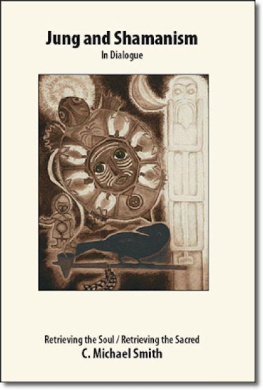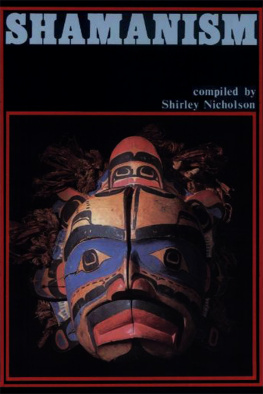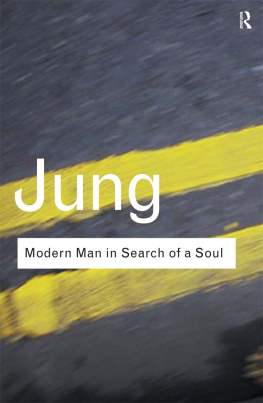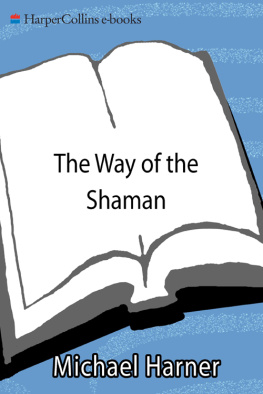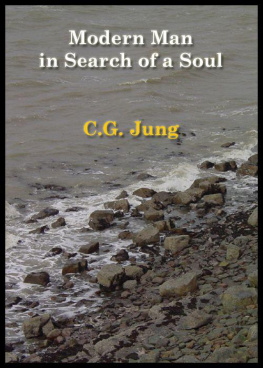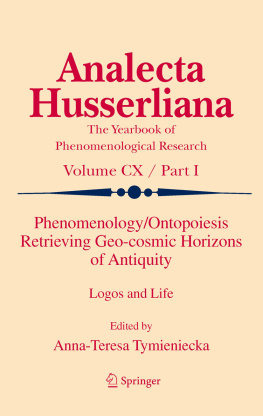C. Michael Smith - Jung and Shamanism in Dialogue: Retrieving the Soul, Retrieving the Sacred
Here you can read online C. Michael Smith - Jung and Shamanism in Dialogue: Retrieving the Soul, Retrieving the Sacred full text of the book (entire story) in english for free. Download pdf and epub, get meaning, cover and reviews about this ebook. year: 2014, genre: Religion. Description of the work, (preface) as well as reviews are available. Best literature library LitArk.com created for fans of good reading and offers a wide selection of genres:
Romance novel
Science fiction
Adventure
Detective
Science
History
Home and family
Prose
Art
Politics
Computer
Non-fiction
Religion
Business
Children
Humor
Choose a favorite category and find really read worthwhile books. Enjoy immersion in the world of imagination, feel the emotions of the characters or learn something new for yourself, make an fascinating discovery.
- Book:Jung and Shamanism in Dialogue: Retrieving the Soul, Retrieving the Sacred
- Author:
- Genre:
- Year:2014
- Rating:5 / 5
- Favourites:Add to favourites
- Your mark:
- 100
- 1
- 2
- 3
- 4
- 5
Jung and Shamanism in Dialogue: Retrieving the Soul, Retrieving the Sacred: summary, description and annotation
We offer to read an annotation, description, summary or preface (depends on what the author of the book "Jung and Shamanism in Dialogue: Retrieving the Soul, Retrieving the Sacred" wrote himself). If you haven't found the necessary information about the book — write in the comments, we will try to find it.
C. Michael Smith: author's other books
Who wrote Jung and Shamanism in Dialogue: Retrieving the Soul, Retrieving the Sacred? Find out the surname, the name of the author of the book and a list of all author's works by series.
Jung and Shamanism in Dialogue: Retrieving the Soul, Retrieving the Sacred — read online for free the complete book (whole text) full work
Below is the text of the book, divided by pages. System saving the place of the last page read, allows you to conveniently read the book "Jung and Shamanism in Dialogue: Retrieving the Soul, Retrieving the Sacred" online for free, without having to search again every time where you left off. Put a bookmark, and you can go to the page where you finished reading at any time.
Font size:
Interval:
Bookmark:
Table of Contents
The Heart of Jung and Shamanism
Preface to Second Edition
This book is the second in a series of three books that elaborate a common thread. The first book was Psychotherapy and the Sacred , which tried to open a theoretical and clinical space for the spiritual dimension in psychotherapy. The third volume, now in process is entitled A Little Psychology of the Heart . It develops a theoretical and very practical framework that bridges the differences in the vocabularies of depth psychology and the indigenous path-based healing system known as shamanism . The second edition of this book provides opportunity to say a little about Jung and Shamanism in Dialogue from the vantage point I now have with the psychology of the heart. It is the opportunity to say what the heart of this book is. The book is, viewed from a content perspective, a study of the rich and complex interface of a range of experiences and technical practices associated with the healing dimensions of shamanism and the analytical psychology developed by C.G. Jung. But this is not its core.
Neither shamanism nor analytical psychology are mere healing professions. Their concerns spread out over many dimensions of life, including the way of life itself. The common ground of this way of life is earth-honoring and attuned to Nature, it is heart centered, and holds to the sacred value of the inner being, call it soul , or simply the person inside , or what have you, and not the symptoms and problems that come to the healers attention. This fact is discussed at various places in the book but I feel a need for more emphasis on the path of the shaman, the path of individuation, as the context out of which a shamanic or Jungian approach to healing must be understood today.
Neither shamanism nor analytical psychology can be gotten simply from studying books. A book, or a class room course can give you the lay of the land, but it cannot provide the living experience. So the question arises, why another edition of a book on these topics? The answer that comes has the same urgency it did when I penned the first draft fifteen years ago: to help us in the Western health care professions, and particularly in the psychotherapeutic professions, to keep open a space for the sacred being which wants to come alive, develop, expand, creatively contribute and bring its own calling and purpose into society. That being can come alive, become whole, and live a healthful and satisfying life if it is aligned with its own center, its own heart, from which the life forward energies arise, and if it is solidly connected to body, and earth, society and Spirit.
In an era of managed care, insurance companies put great pressure on psychotherapists to use empirically validated treatments [EVTs] for resolving specific problems and symptoms. Psychology operating in this way has surely lost its own soul, and its sense of soul, and is in need of its recovery. That there is therapeutic value in such validated techniques is not in question. That one must focus only on the troubling problems, symptoms and diagnostic patterns to expedite therapy and save costs is put in question. Such an orientation can easily influence the therapist to lose sight of the person inside, that being who has those problems or symptoms. If that inner person is not cared for, supported, helped to find their own fertile core of aliveness and live from it, then its health is not addressed, and the fundamental life issues that could result in solid psychological health are missed.
Psychology, etymologically speaking, is the expression or study of the soul, this inner being we are talking about. Yet the pressure today is increasing to treat contents [symptoms, problems, diagnostic patterns], and the patient is not any of those things, but the one who has them. To be soul-full and not soul-lost , as it is often put in the shamanic vocabulary, that inner being needs consideration, support, and space, to stir, breathe, come alive, move into the world more deeply and solidly, and this requires a great deal of genuine and loving care on the part of the therapist. In our healing efforts, whether they be shamanic or depth psychological, finding the one in there who is lost and helping restore it to life is a matter of helping that being find its own core of aliveness, its own center of being, and begin sustaining and nourishing its life by living from there, mind aligned with heart, and servant of it.
The common ground of sacrality in shamanism and Jungian psychology is a path of the heart that realizes that all life is sacred [not just human life] and that each life form, including the human, has a center, a core of aliveness in which the Sacred dwells. Black Elk, the Lakota Sioux medicine man put it this way to Joseph Epes Brown: Peace comes in within the souls of men when they realize their relationship, their oneness with the universe and all its powers, and when they realize that at the center of the universe dwells Wakan Tanka, and that this center is really everywhere, it is within each of us.
In Jungs psychology it is the archetypal Self, and its symbols which refer to this deep center of the person, its potential wholeness and source of development. To individuate, that is, to become a developed, distinct, and whole individual you had to live from this deep center and font of your being. This is Jung s equivalent for a path of the heart, in which the ego-consciousness becomes subordinate to and servant of the Self. In shamanism this same truth is often expressed as walking a path of the heart, in which the mind finds its proper relationship as its servant, able to enact and carry out its vision. Hence both are essentially psychologies of the heart. The way advocated in both traditions also asserts the value of living in humble, respectful, right relationship to the earth and the elements of nature. The way Black Elk suggests can only be realized in humility before even the tiniest creatures. Jung found nature alive and brought great reverence to it, and, his path of individuation was a human expression of what he saw going on everywhere in nature. In a letter to a friend he wrote everything living dreams of individuation . Jung believed one could only get right with oneself if one got right with nature. Often, when he felt out of sorts he would retreat at Bollingen where he could once again find his true life, by playfully absorbing himself digging canals at the waters edge with a stick, and entering into mystical participation with wind and waves, trees and an open fire over which he cooked.
As the reader progresses through this book, and looks at many details of the shamanic and Jungian perspectives and practices, the uses of ecstasy and imagination, altered states of consciousness and efforts at soul recovery, at ritual forms, and possible psychotherapeutic implications, he or she will do well to keep in mind the real heart of it all, that we have but hinted at here. It isnt the techniques that are the essential thing, but the person inside, its capacity to live from the heart in earth-honoring and Nature-attuning ways that is the essential center of the Jung/shamanism interface.
C. Michael Smith, Ph.D.
Crows Nest Retreat
Dowagiac, Michigan
January, 2007
ACKNOWLEDGEMENTS
A book such as this is indebted to many individuals, institutions, and disciplines, too numerous to mention all here. There are certain individuals who have played a special role in bringing this book to birth and I would like to mention them here. Special thanks to Robert L. Moore, the Jung and Spirituality series editor, who formerly as my teacher and doctoral advisor inspired a number of the insights, including the methodology, employed in this book. It was he who inspired the dialogic topic and encouraged me through the process of writing it. I must also extend an enormous thank you to my wife, Toni Smith, who read portions of the manuscript, gave helpful advice, and endured my absence for long periods of time while I was working on this project. It is she who is my most loyal source of encouragement and inspiration. Then there are those friends who contributed to this book in a variety of ways, either through numerous unofficial dialogues and supportive encouragement, or through editorial revisions: my Jungian analyst friends David J. Dalrymple, John R. Haule, Tess Castleman, Thomas Kapacinskas, E. C. Whitmont and Sylvia Brinton Perea, and my co-workers in practice Marc T. Milhander, Dennis Waite, Krista Matthews, and my manuscript secretary Lee Ann Parm, who resolved many technical difficulties for me. I wish to thank my students at the Chicago Theological Seminary and University of Chicago Hospitals, and wish also to thank Dani, Joe, Josh, Katie, Jason, and Eric for their enthusiastic cooperation. I must finally thank the staff at Paulist Press for their advice, patience, and help and express deepest gratitude to Bill Kelley, who provided his cottage at Lake Chapin so that I might enjoy the solitude necessary to produce such a work.
Font size:
Interval:
Bookmark:
Similar books «Jung and Shamanism in Dialogue: Retrieving the Soul, Retrieving the Sacred»
Look at similar books to Jung and Shamanism in Dialogue: Retrieving the Soul, Retrieving the Sacred. We have selected literature similar in name and meaning in the hope of providing readers with more options to find new, interesting, not yet read works.
Discussion, reviews of the book Jung and Shamanism in Dialogue: Retrieving the Soul, Retrieving the Sacred and just readers' own opinions. Leave your comments, write what you think about the work, its meaning or the main characters. Specify what exactly you liked and what you didn't like, and why you think so.

